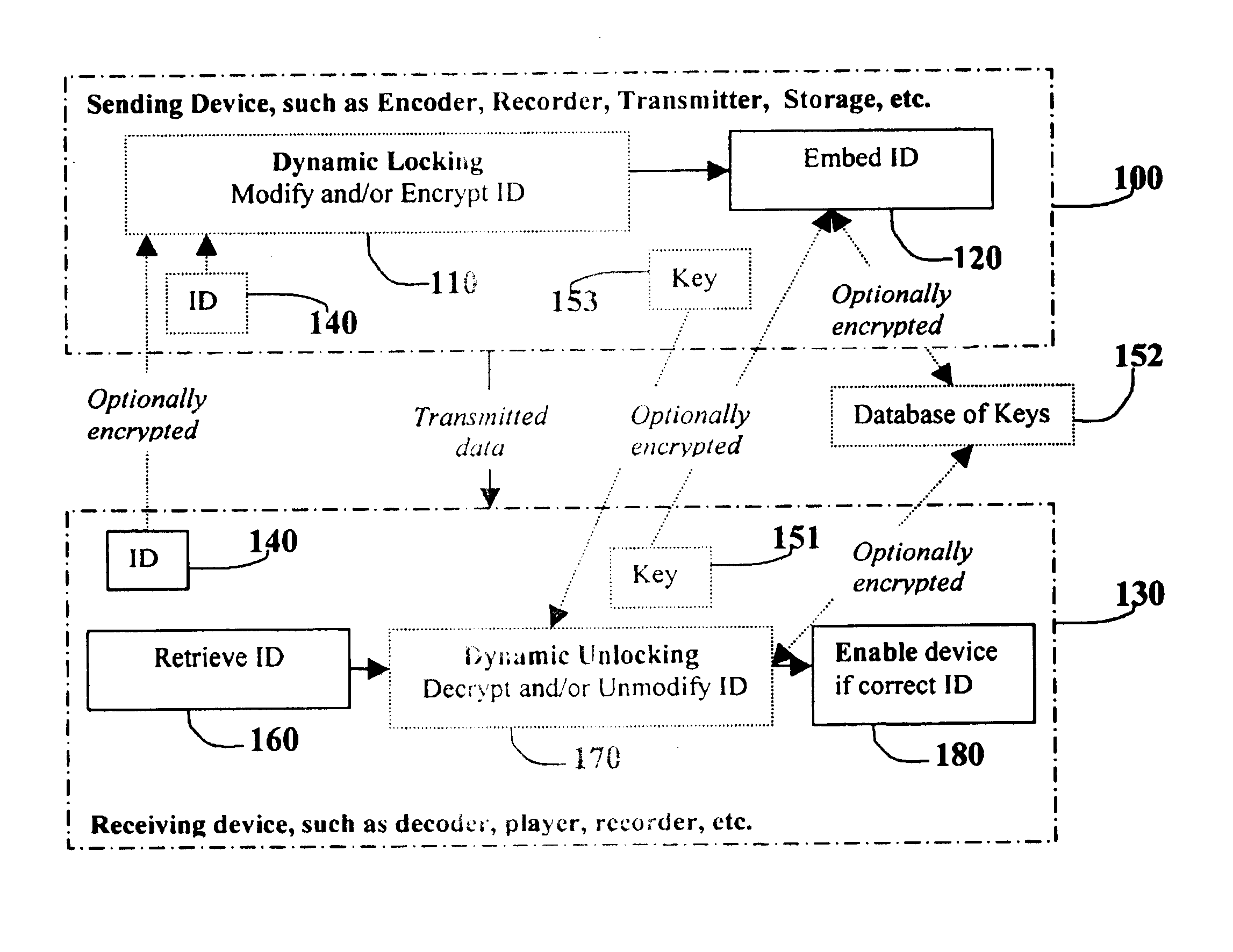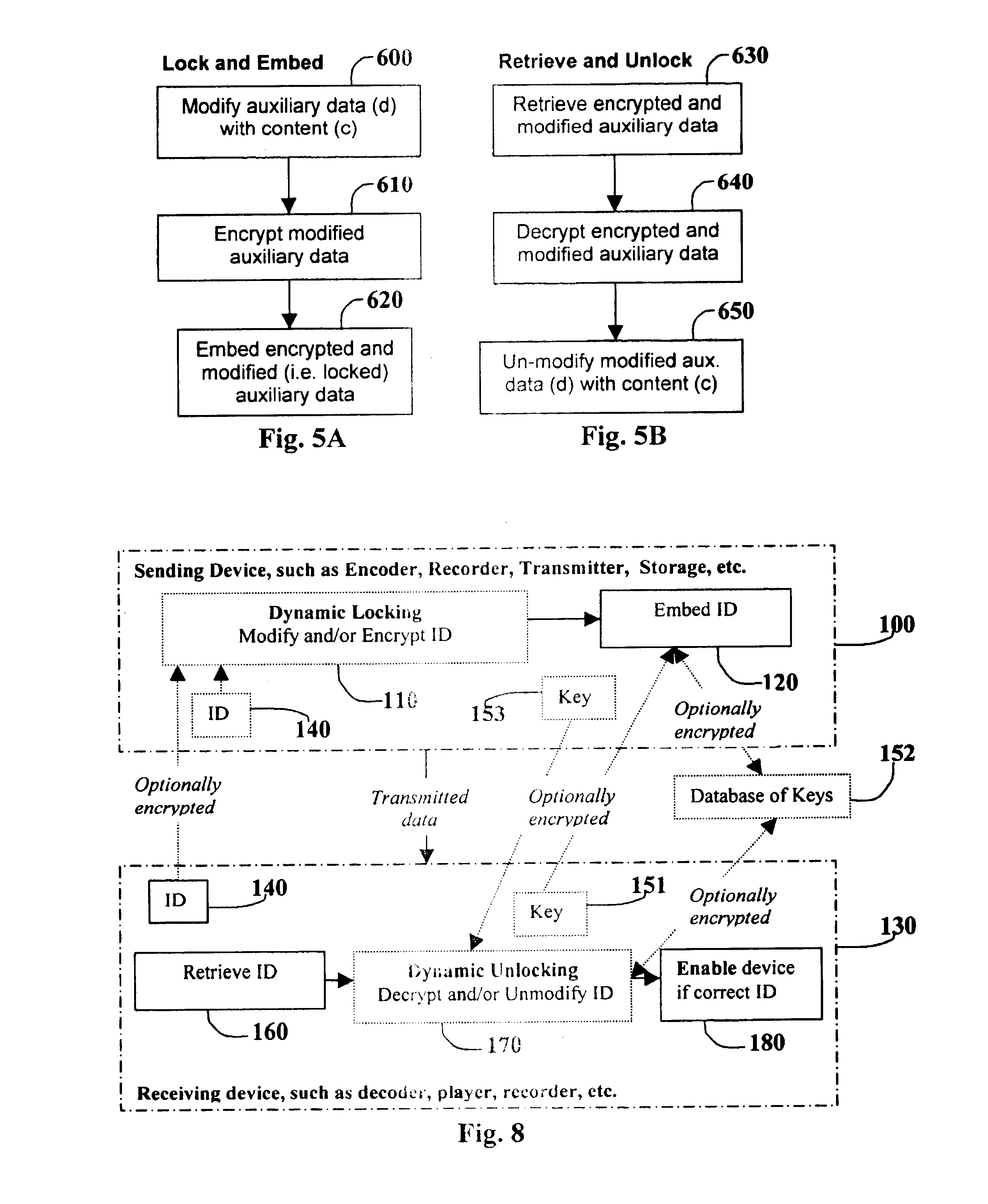Method and apparatus for robust embedded data
a technology of embedded data and robustness, applied in the field of signal processing, can solve the problem that the end user has gained nothing, and achieve the effect of increasing the robustness of embedded data to attack
- Summary
- Abstract
- Description
- Claims
- Application Information
AI Technical Summary
Benefits of technology
Problems solved by technology
Method used
Image
Examples
example utilization
[0077]These five example utilizations are described to aid in understanding the enabling and dynamic locking process and apparatus. The general underlying process for these examples is displayed in FIG. 8 and the corresponding apparatus is shown in FIGS. 9 and 10. The process, in general, begins with a sending device 100, dynamically locking an ID 140 as shown in box 110, and embedding the locked ID within the media as shown in box 120. Remember, as defined at the beginning of this section, the term ID usually refers to an identifier, but can include any auxiliary information. The sending device 100 may be an encoder, recorder, transmitter, storage medium, or the like.
[0078]The media is then transmitted to a receiving device 130 in which the locked ID is retrieved as shown in box 160, and dynamically unlocked as shown in box 170. Then, the proper action is enabled if allowed by the retrieved ID 140, as shown in box 180. The receiving device 130 may be a decoder, player, recorder, an...
PUM
 Login to View More
Login to View More Abstract
Description
Claims
Application Information
 Login to View More
Login to View More - R&D
- Intellectual Property
- Life Sciences
- Materials
- Tech Scout
- Unparalleled Data Quality
- Higher Quality Content
- 60% Fewer Hallucinations
Browse by: Latest US Patents, China's latest patents, Technical Efficacy Thesaurus, Application Domain, Technology Topic, Popular Technical Reports.
© 2025 PatSnap. All rights reserved.Legal|Privacy policy|Modern Slavery Act Transparency Statement|Sitemap|About US| Contact US: help@patsnap.com



